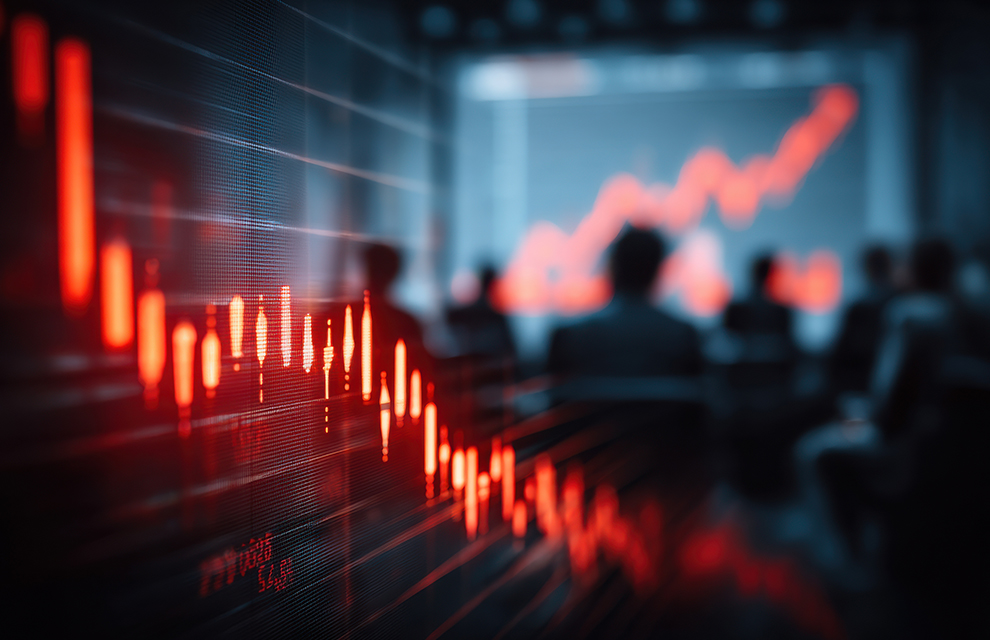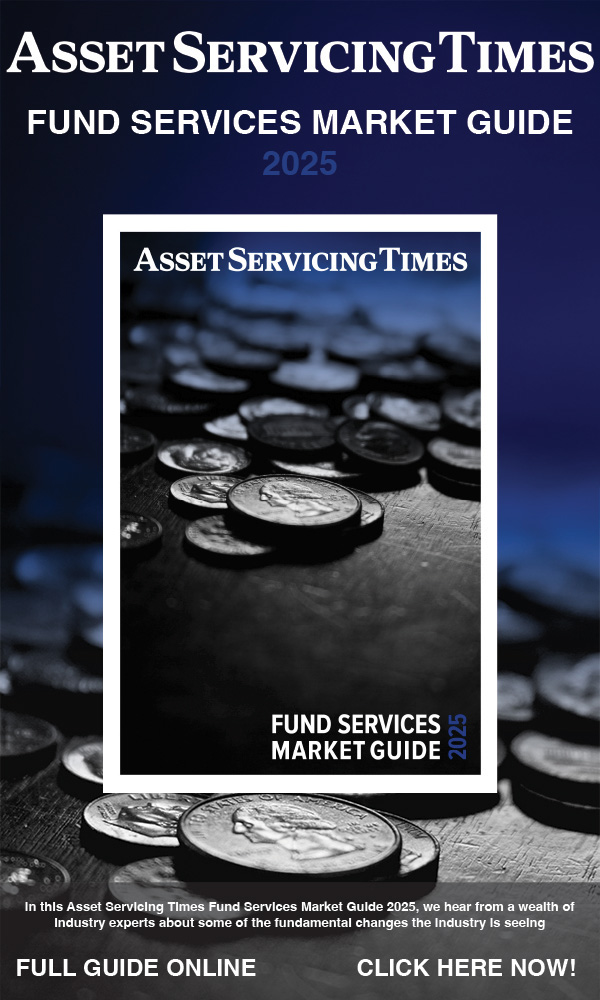Predicting the unpredictable
30 Apr 2025
How stress tests have the power to influence investment decisions and offer an insight into market movement
 Image: whitestorm/stock.adobe.com
Image: whitestorm/stock.adobe.com
After 25 years of analysing financial markets, there is little that Christoph Schon, lead principal at Investment Decision Research, SimCorp, hasn’t seen before. Having weathered tariffs, trade wars, and market shocks over the years, Schon and his team have offered investors and institutions alike a glimpse into the potential risks and consequences of these so-called extreme market events.
Yet, as Donald Trump continues to inflict his ever-changing tariff policies on the global economy, Schon now faces a new challenge: monitoring and predicting market events on an almost daily basis, a feat made more difficult when the president himself appears unaware of his next move.
Making sense with method
Schon’s area of research primarily focuses on using Axioma’s (as part of SimCorp) risk management tools to help institutions make better investment decisions, a large part of which relies on conducting stress tests. Yet, conducting stress tests in itself is a science, where the objective, Schon says, is simple: “We try to make sense of what is happening in financial markets.”
In broad terms, Schon explains how this works: “[With stress testing] we can shock any market variable and regress the pricing factors that drive the risk and returns of the portfolio against those shocks. This allows us to estimate what that means for a portfolio and how a portfolio is likely to behave in certain types of scenarios.”
These scenarios can take all shapes and sizes. Civil wars, presidential elections, acts of terrorism, and even environmental disasters all have a wider impact on financial markets and have featured in countless test scenarios. However, stress testing doesn’t just begin from the moment an extreme market event occurs; it is also about exposing potential areas of concern and how they may play out in the global economy.
“In autumn last year, when the presidential race was still on, we were already looking at possible scenarios,” Schon points out. “What would a Trump win mean? What would a Harris win mean? And also, if we had another trade war, what would happen to financial markets?”
Having run the models and input the variables, what he found was that, “it turned out to be quite accurate, actually, in terms of how it unfolded.”
However, Schon is only too aware that stress testing is not a perfect reflection of the future. Like all sciences, there is a degree of limitation on how much the model can reveal. Largely placing this on the fact that stress tests are “calibrated on historical data,” he considers for a moment the implications of this method, “in a sense, we’re assuming that history will repeat itself.”
Yet, history has had a tendency to repeat itself and by revisiting old test models, Schon and his team are able to compare past predictions with current market scenarios as they are playing out in real time. “Then we can see, how good were the predictions? What is different this time?”
When questioned on the effectiveness of the tests at minimising the impact of market shocks, Schon reflects on the accuracy of his models. “When we compared the actual impact of the tariffs to what the model predicted, we could see that some things were spot on, such as cyclical sectors underperforming. But what the model didn’t foresee was the announcement in Germany that they would suspend the debt brake, which increased bond yields when the model had predicted that yields would come down.”
Despite their limitations, Schon believes the models still prove valuable in identifying, navigating, and mitigating sources of risk that would have otherwise gone undetected. After all, by running the tests, he says he is able to “see which parts of the markets are going to be most severely affected and at least prepare.”
Changing times
Another “sign of the times”, Schon says, is the relationship between the stock and bond market, where he notes that the negative stock-bond correlation that had been so prominent during the early 2000s to mid-2010s has now changed.
“There was always this balance between the stock and the bond market, and investors had been reliant on that.
“When money would move out of the stock market, it would go into the treasury market instead. This means yields would come down, and when things recovered, that money would go back into the stock market, central banks would hike rates, and yields would go up again.”
However, since the onset of the pandemic, he believes that high inflation (the culprit of which lies, in part, with Russia’s invasion of Ukraine and the resulting energy price hike) has created an environment “where suddenly stocks and bonds move together.
“That was a big challenge for many in the financial markets. I mean, I struggle to remember a time when stocks and bonds did not move in opposite directions,” he says, looking incredulous for a moment.
He considers how this reflects within the current market climate, where changing tariff policies have only exacerbated the impending sense of uncertainty and economic loss. His stress tests have revealed that mounting pressure on the Federal Reserve (the Fed) to cut rates “is a terrible idea, especially while the correlation between interest rates and stock prices is very negative.”
Understanding that cutting rates only signals to investors that the Fed may be caving into political pressure, Schon is clear about the bank’s next steps: “Do not cut rates right now if you can avoid it.”
However, in the past week since speaking to Schon, Trump’s trade war tells yet another story.
With latest shipping figures showing an almost 30 per cent decline in US imports compared to that of last year and a potential recession on the horizon, it is up to Schon to provide investors with a perhaps more optimistic glimpse into the future than what the president may have in mind.
Yet, as Donald Trump continues to inflict his ever-changing tariff policies on the global economy, Schon now faces a new challenge: monitoring and predicting market events on an almost daily basis, a feat made more difficult when the president himself appears unaware of his next move.
Making sense with method
Schon’s area of research primarily focuses on using Axioma’s (as part of SimCorp) risk management tools to help institutions make better investment decisions, a large part of which relies on conducting stress tests. Yet, conducting stress tests in itself is a science, where the objective, Schon says, is simple: “We try to make sense of what is happening in financial markets.”
In broad terms, Schon explains how this works: “[With stress testing] we can shock any market variable and regress the pricing factors that drive the risk and returns of the portfolio against those shocks. This allows us to estimate what that means for a portfolio and how a portfolio is likely to behave in certain types of scenarios.”
These scenarios can take all shapes and sizes. Civil wars, presidential elections, acts of terrorism, and even environmental disasters all have a wider impact on financial markets and have featured in countless test scenarios. However, stress testing doesn’t just begin from the moment an extreme market event occurs; it is also about exposing potential areas of concern and how they may play out in the global economy.
“In autumn last year, when the presidential race was still on, we were already looking at possible scenarios,” Schon points out. “What would a Trump win mean? What would a Harris win mean? And also, if we had another trade war, what would happen to financial markets?”
Having run the models and input the variables, what he found was that, “it turned out to be quite accurate, actually, in terms of how it unfolded.”
However, Schon is only too aware that stress testing is not a perfect reflection of the future. Like all sciences, there is a degree of limitation on how much the model can reveal. Largely placing this on the fact that stress tests are “calibrated on historical data,” he considers for a moment the implications of this method, “in a sense, we’re assuming that history will repeat itself.”
Yet, history has had a tendency to repeat itself and by revisiting old test models, Schon and his team are able to compare past predictions with current market scenarios as they are playing out in real time. “Then we can see, how good were the predictions? What is different this time?”
When questioned on the effectiveness of the tests at minimising the impact of market shocks, Schon reflects on the accuracy of his models. “When we compared the actual impact of the tariffs to what the model predicted, we could see that some things were spot on, such as cyclical sectors underperforming. But what the model didn’t foresee was the announcement in Germany that they would suspend the debt brake, which increased bond yields when the model had predicted that yields would come down.”
Despite their limitations, Schon believes the models still prove valuable in identifying, navigating, and mitigating sources of risk that would have otherwise gone undetected. After all, by running the tests, he says he is able to “see which parts of the markets are going to be most severely affected and at least prepare.”
Changing times
Another “sign of the times”, Schon says, is the relationship between the stock and bond market, where he notes that the negative stock-bond correlation that had been so prominent during the early 2000s to mid-2010s has now changed.
“There was always this balance between the stock and the bond market, and investors had been reliant on that.
“When money would move out of the stock market, it would go into the treasury market instead. This means yields would come down, and when things recovered, that money would go back into the stock market, central banks would hike rates, and yields would go up again.”
However, since the onset of the pandemic, he believes that high inflation (the culprit of which lies, in part, with Russia’s invasion of Ukraine and the resulting energy price hike) has created an environment “where suddenly stocks and bonds move together.
“That was a big challenge for many in the financial markets. I mean, I struggle to remember a time when stocks and bonds did not move in opposite directions,” he says, looking incredulous for a moment.
He considers how this reflects within the current market climate, where changing tariff policies have only exacerbated the impending sense of uncertainty and economic loss. His stress tests have revealed that mounting pressure on the Federal Reserve (the Fed) to cut rates “is a terrible idea, especially while the correlation between interest rates and stock prices is very negative.”
Understanding that cutting rates only signals to investors that the Fed may be caving into political pressure, Schon is clear about the bank’s next steps: “Do not cut rates right now if you can avoid it.”
However, in the past week since speaking to Schon, Trump’s trade war tells yet another story.
With latest shipping figures showing an almost 30 per cent decline in US imports compared to that of last year and a potential recession on the horizon, it is up to Schon to provide investors with a perhaps more optimistic glimpse into the future than what the president may have in mind.
NO FEE, NO RISK
100% ON RETURNS If you invest in only one asset servicing news source this year, make sure it is your free subscription to Asset Servicing Times
100% ON RETURNS If you invest in only one asset servicing news source this year, make sure it is your free subscription to Asset Servicing Times



